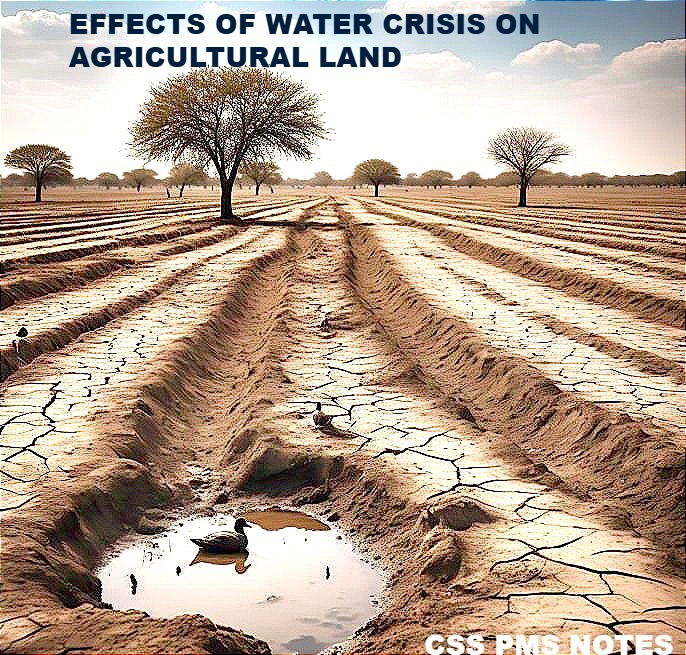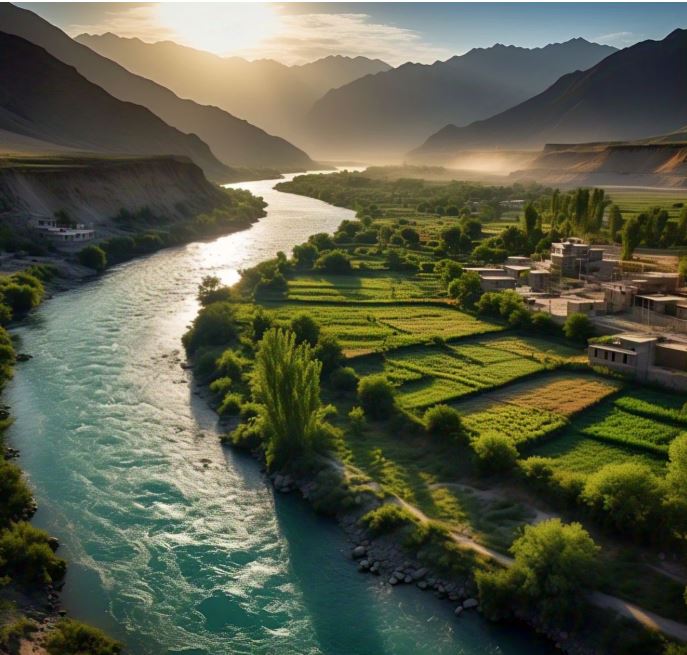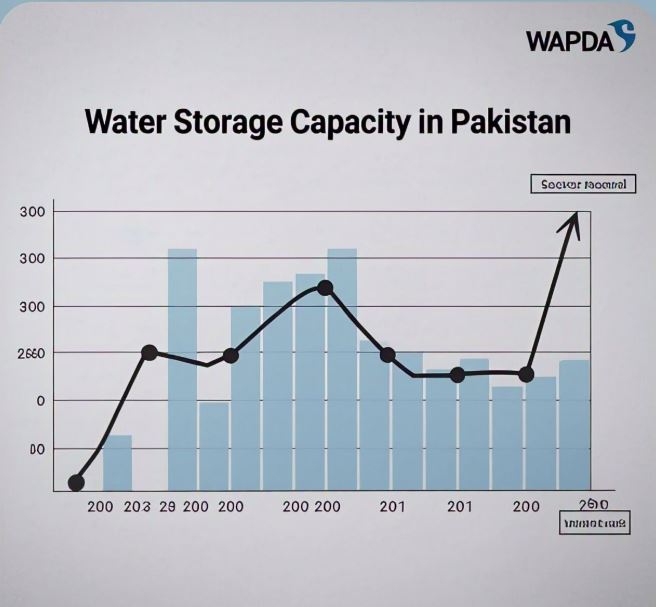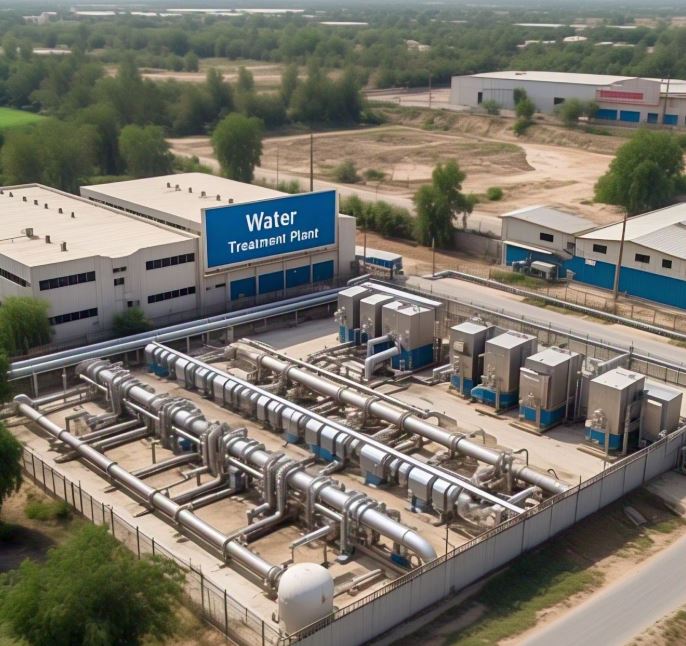The Water Crisis in Pakistan
I. Introduction
Pakistan is facing a severe water crisis that threatens the country's food security, economy, and human health. According to the World Bank, Pakistan is one of the most water-stressed countries in the world, with a per capita water availability of just 1,000 cubic meters per person per year (World Bank, 2020). This is well below the international threshold of 1,700 cubic meters per person per year, which is considered the minimum required for a healthy and sustainable life. The water crisis in Pakistan is a complex issue that requires immediate attention and action.
The water crisis in Pakistan is not just an environmental issue; it also has significant social and economic implications. The country's economy is heavily dependent on agriculture, which is the largest user of water resources. The lack of water for irrigation is affecting crop yields, leading to food insecurity and economic losses. Furthermore, the water crisis is also having a devastating impact on human health, with many people lacking access to safe drinking water and sanitation.
II. Background
Pakistan's water management has a long and complex history. The country's water resources are primarily dependent on the Indus River Basin, which is shared with India and other neighboring countries. The Indus Water Treaty, signed in 1960, regulates the sharing of water resources between Pakistan and India. However, the treaty has been a subject of controversy and dispute over the years, with both countries accusing each other of violating the agreement (Khan, 2019).
The current state of water resources in Pakistan is alarming. The country's water storage capacity is limited, and the existing infrastructure is inadequate to meet the growing demand for water.
According to a report by the Pakistan Water and Power Development Authority (WAPDA), the country's water storage capacity is just 30 days, compared to the international standard of 120 days (WAPDA, 2020). This means that Pakistan is heavily reliant on rainfall and snowmelt to meet its water needs, making it vulnerable to climate change and other external factors.
III. Causes of the Water Crisis
The water crisis in Pakistan is caused by a combination of factors, including climate change, population growth, and inefficient water management. Climate change is altering the patterns of rainfall and snowmelt, leading to more frequent and severe floods and droughts (IPCC, 2019). The population of Pakistan is growing rapidly, putting additional pressure on the country's limited water resources. Furthermore, the existing water infrastructure is inadequate, and the water management practices are inefficient, leading to significant water losses and waste.
According to a report by the Asian Development Bank, the water crisis in Pakistan is also caused by the lack of investment in water infrastructure and the inadequate management of water resources (ADB, 2019). The report states that "the water sector in Pakistan is facing significant challenges, including limited water availability, increasing demand for water, and inefficient use of water."
IV. Why We Need Dams
Dams are essential for water storage and management in Pakistan. They help to regulate the flow of water, prevent floods, and provide a steady supply of water for irrigation, drinking, and other purposes. According to a report by the World Bank, the construction of dams can help to increase Pakistan's water storage capacity, reduce the risk of floods, and improve the overall efficiency of water management (World Bank, 2020).
The construction of dams is also crucial for the development of Pakistan's economy. According to a report by the Pakistan Bureau of Statistics, the construction of dams can help to increase the country's GDP by up to 2% (PBS, 2020). The report states that "the construction of dams is essential for the development of Pakistan's economy, as it will help to increase the country's water storage capacity, reduce the risk of floods, and improve the overall efficiency of water management."
V. Effects of the Water Crisis
The water crisis in Pakistan has significant effects on agriculture, human health, and the economy. The lack of water for irrigation is affecting crop yields, leading to food insecurity and economic losses. According to a report by the Food and Agriculture Organization (FAO), the water crisis in Pakistan is leading to a decline in agricultural production, which is affecting the country's food security (FAO, 2020).

The water crisis is also having a devastating impact on human health, with many people lacking access to safe drinking water and sanitation. According to a report by the World Health Organization (WHO), the water crisis in Pakistan is leading to the spread of water-borne diseases, such as cholera and typhoid (WHO, 2020). The report states that "the lack of access to safe drinking water and sanitation is a major public health concern in Pakistan, and it requires immediate attention and action."
VI. National Water Policy of Pakistan
The National Water Policy of Pakistan is a comprehensive framework that aims to manage the country's water resources in a sustainable and equitable way. The policy was approved in 2018 and outlines the country's strategy for managing its water resources.

VII. Causes of Water Crisis in Pakistan
The water crisis in Pakistan is caused by several factors, including:
1. Climate Change:
Rising temperatures and changing precipitation patterns are affecting the country's water availability.
2. Population Growth:
The increasing population is putting pressure on the country's water resources.
3. Inefficient Water Management:
The lack of effective water management systems is leading to waste and misuse of water.

VIII. Key Objectives of the Water Policy
The key objectives of the Water Policy of Pakistan are:
1. Water Security:
To ensure that all citizens have access to safe and clean water for drinking, sanitation, and hygiene.
2. Sustainable Development:
To manage water resources in a way that supports sustainable development, including economic growth, food security, and environmental protection.
3. Equitable Distribution:
To ensure that water is distributed equitably among all stakeholders, including farmers, industries, and urban and rural communities.
4. Water Conservation:
To promote water conservation and efficient use of water in all sectors, including agriculture, industry, and domestic use.
5. Disaster Management:
To develop strategies for managing water-related disasters, such as floods and droughts.
IX. Strategies for Achieving the Objectives
To achieve the objectives of the Water Policy, the following strategies have been identified:
1. Water Infrastructure Development:
To develop and maintain water infrastructure, including dams, reservoirs, canals, and water treatment plants.
2. Water Conservation and Efficiency:
To promote water conservation and efficient use of water in all sectors, including agriculture, industry, and domestic use.
3. Water Pricing and Tariff:
To introduce a water pricing and tariff system to encourage efficient use of water and generate revenue for water infrastructure development.
4. Institutional Strengthening:
To strengthen the institutional framework for water management, including the development of a national water authority and provincial water departments.
5. Research and Development:
To promote research and development in water management, including the development of new technologies and techniques for water conservation and efficient use.
X. Action Plan
The Water Policy of Pakistan includes an action plan with specific targets and timelines for achieving the objectives. The action plan includes:
1. Short-term (2018-2025): To develop and implement a national water management system, including the development of a national water authority and provincial water departments.
2. Medium-term (2025-2035): To develop and implement a water conservation and efficiency program, including the promotion of water-saving technologies and practices.
3. Long-term (2035-2050): To achieve water security and sustainable development, including the development of new water infrastructure and the promotion of water-efficient practices.

XI. Challenges and Opportunities
The implementation of the Water Policy of Pakistan faces several challenges, including:
1. Limited Financial Resources:
The implementation of the Water Policy requires significant financial resources, which are limited in Pakistan.
2. Institutional Weaknesses:
The institutional framework for water management in Pakistan is weak, which can hinder the effective implementation of the Water Policy.
3. Climate Change:
Climate change is affecting water availability and quality in Pakistan, which can impact the implementation of the Water Policy.
Despite these challenges, there are opportunities for improving water management in Pakistan, including:
XII. International Cooperation:
Pakistan can benefit from international cooperation and assistance in water management, including the sharing of expertise and technology.2. Private Sector Participation: The private sector can play a significant role in water management in Pakistan, including the development of water infrastructure and the promotion of water-efficient practices.3. Community Participation: Community participation is essential for the effective implementation of the Water Policy, including the promotion of water conservation and efficient use.
Conclusion
In conclusion, the water crisis in Pakistan is a complex and pressing issue that requires immediate attention and action. The country's water sector is facing several challenges, including limited water availability, inefficient use of water, and inadequate water infrastructure.
The National Water Policy of Pakistan provides a comprehensive framework for addressing the water crisis, but its implementation requires a concerted effort from all stakeholders, including the government, private sector, and civil society.
By investing in water infrastructure, promoting water conservation, and improving water governance, Pakistan can address its water crisis and achieve a water-secure future. This will require a long-term commitment to water management and a willingness to adopt innovative and sustainable solutions.
Ultimately, the water crisis in Pakistan is a challenge that can be overcome with the right policies, technologies, and investments. By working together, we can ensure a water-secure future for Pakistan and its people.